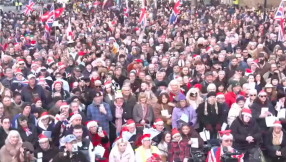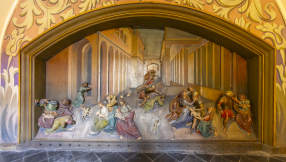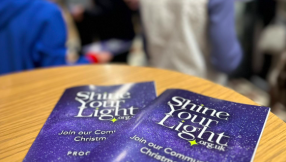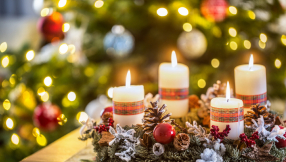North Scotland Churches Enjoy Swell in Numbers
According to the latest figures from Christian Research, half a million people stopped going to church between 1998 and 2005, although the decline in attendance has slowed somewhat thanks to an increase in the number of churches and a noted increase in churchgoers among minority ethnic communities.
Just over half a million attend Church of Scotland services, a drop of 1.3 million in the 1960s, and the Catholic Church can count just over 200,000 practicing members - down 20 per cent from ten years ago.
But as churches across England, Wales and Scotland continue to lament these figures, churches in Inverness and the surrounding area are brimming as their halls continue to fill to capacity, reports The Inverness Courier.
"Over the last two years I would say there has been an upsurge in church attendance on any given Sunday, and we usually have difficulty seating everyone at Christmas. In fact we have had to bring in extra seats," said Canon Len Black of St Michael and All Angels Episcopal Church of Scotland in Abban Street, Inverness.
"Nine years ago Bishop Gregor McGregor [former Bishop of Inverness] announced that he was going to close St Michael's, but since then we have completed a £250,000 refurbishment and the life of the parish is on the up and up."
The Rev David Meredith, minister of the Free Church in Smithton and Culloden agreed Inverness was clearly out of step with the overall national trend when it comes to church attendance.
"Here in Smithton and Culloden we are in a bit of a Bible Belt in that the Free Church, the Barn Church of Scotland, Culloden Baptist Church and the King's Fellowship are all enjoying significantly higher attendances than many others in other areas," he said.
"I would say, in fact, that the evangelical sector, of which we are part, is growing at a greater rate than the non-evangelical churches. I put it down to the fact that people are looking for certainty in an age of uncertainty.
"Christmas is a particularly busy time of year in a non-secular sense for us because of various events we are involved in such as the carol services we'll be holding in schools.
"It is also significant that our increasingly bizarre ethos of political correctness is now being seen as an emperor without clothes."
The Rev John Chambers, of Ness Bank Church of Scotland, said membership figures in his church had been increasing steadily, which was encouraging, The Inverness Courier reports.
"People are definitely looking for something beyond what they can buy in the shops. Our special Christmas services are well attended. They are usually jam-packed with a lot of young people in the congregation," he explained.
"In recent years I have definitely seen a renewal of interest among young people, but we have to meet people half way without changing our message."
Fr Michael Savage, of St Mary's RC Church, Huntly Street, originally of Glasgow, said he had noticed a difference between the Highlands and some other areas in terms of spirituality.
He found in the Highlands that there was a lot more awareness of the place of faith in people's lives.
"I would also agree with the other members of the clergy who have said they have noticed an increase in the numbers of those attending church. In our case, the arrival of so many Polish people in the area has helped to swell the congregation," he said.
A similar picture was reported by the Rev Tom Urquhart, of Inverness Baptist Church who had noticed an increase in attendance and membership over the last two years, due partly to East European communities.
"An encouraging work for us has been teaching English to the East Europeans in classes held in the church. We wanted to reach out to show them care and some have responded by coming to our services," he explained.
"As far as the young are concerned, we have an encouraging youth club on a Thursday night with around 20 attending, and I can say there is definitely a searching among young people."













